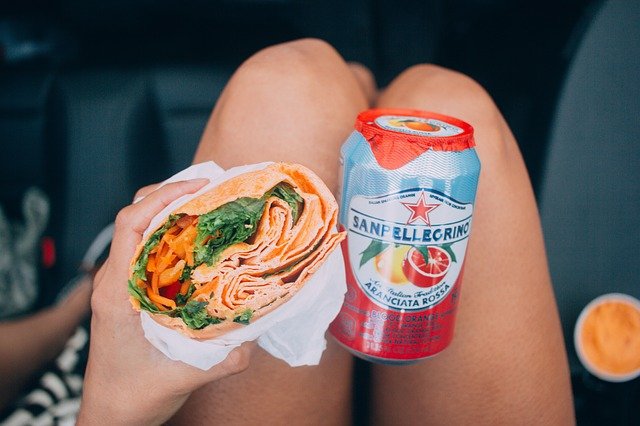
Image credit: Pixabay
In the previous paper discussion I discussed the effects of sugar-sweetened beverages (SSBs) on the metabolic efficiency of the human body. The conclusion was that consumption of SSBs, besides providing extra calories, make the body more prone to storing fat, as fat oxidation was decreased. Now that negative effects of SSB consumption are identified the questions turn to why people drink them and what can be done prevent SSB consumption.
The current paper obtained a large data set from urban fast-food restaurants customers (n = 11795) in New York and Newark and Jersey City, New Jersey (2013-14). They were interested into what caused customers to buy a drink and whether a customer refilled their drink. The likelihood of refilling a drink was subsequently correlated with the refill policy of the fast-food chains.
The authors found that 30% of total customers ordered a beverage. Any beverage counted for this number, but 90% of the ordered beverages was an SSB. So it is clear that almost always if people buy a drink it is a soda. Of the people who ordered a drink only 9% reported that they got a refill, which amounts to 3% of refills for the whole data set. This seems like a low amount, but there are some other statistics that are important to consider.
- About two-thirds of all customers took the meal to go, while to-go or eating at the restaurant did not influence customers choice of buying a beverage.
- People who do eat at the restaurant ordered a beverage in 41% of the cases.
- People who eat at the restaurant and ordered a beverage refilled in 15% of the cases.
Only taking into account people who ate at the restaurant increases the beverage consumption and the rate of refills doubled to ~6%. An interesting finding is also that when people buy a small sized beverage they are more likely to get refills. Yet when the authors control for the beverage size, a refill still results in a higher energy consumption of 250 kcal. You might expect, if people get more calories from a beverage refill, then they offset their total calorie consumption by eating less food. This was however not the case. Free refills were associated with a total meal calorie increase of 330 kcal, people eat more with free refills.
Now we have an indication of how many people buy sodas and get refills. The next step is to compare the fast-food chains policy on refills to how often people get refills. Fast-food chains that allowed refills were divided into those with non-self-serve refills and those with a self-serve refills. The availability of a self-serving refill kiosk was highly associated with customers getting a refill. In fact customers were over 7 times more likely to get a refill when there were self-serve refills as compared to a non-self-serve refills. The policy of the fast-food chain is highly influential in peoples decision to get a refill.
Several things are now clear. The consumption of sodas is an important factor in the obesity crisis, it influences the burning of fat and offsets the benefits of higher protein consumption. The availability of refills significantly increases the amount of soda people drink and the energetic amount of their meal. Finally, the refill policy of the fast-food chains highly influenced peoples decision to get refills. In conclusion, the easier the companies make it for people to refill their cup, the more people will drink. Establishing a rule for companies to only have non-self-serve refills would contribute to a healthier society. Should we then stop companies from making self-serve refills available, or is the responsibility for the consumer?
This post was a discussion based on the following paper:
Breck A, Cantor JH, Elbel B. Energy contribution of sugar-sweetened beverage refills at fast-food restaurants. Public Health Nutr [Internet]. 2017;20(May):1–6.
More from FoodLabScience:
The Atwater Study
#001 Paper discussion – Sugary drinks
Website: FoodLabScience
Youtube: FoodLabScience

